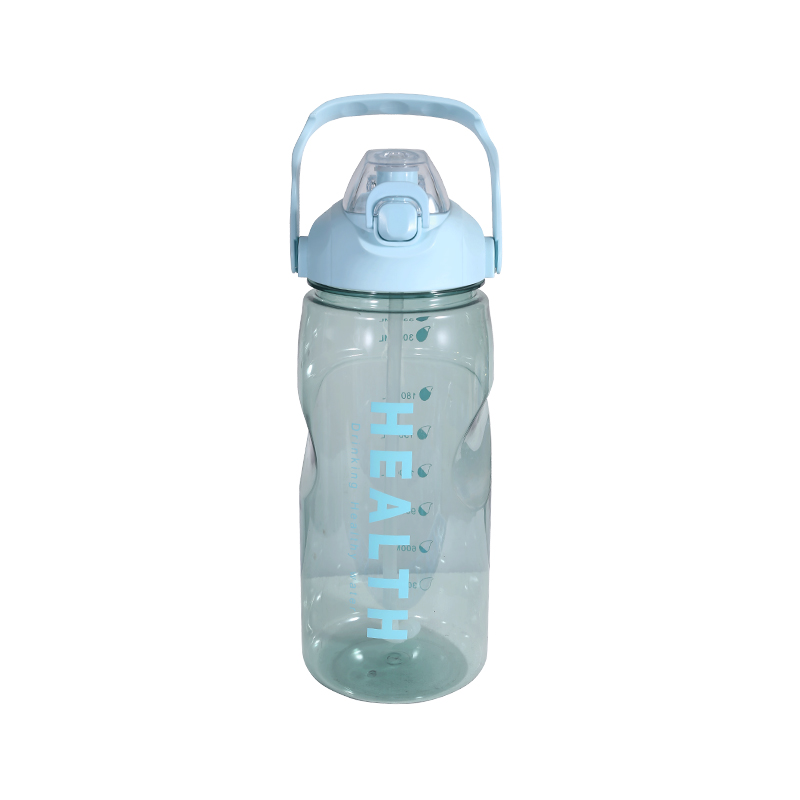Reliable sealing is one of the crucial factors when selecting a water bottle for active lifestyles. Whether carried in a gym bag, backpack, or car cupholder, a well-sealed container prevents messy spills and wasted hydration. This article focuses on the sealing performance of a plastic sports water bottle and discusses the key design and usage elements that affect its leak resistance.

Components of an Effective Seal
The core of a plastic sports water bottle’s leak-proof ability lies in its closure system. Most bottles use either a screw-on cap, a flip-top lid, or a push-pull spout. In higher-quality models, these are reinforced with silicone or rubber gaskets that create a tight barrier when compressed. The gasket fills small gaps between the lid and bottle opening, preventing water from escaping even when the bottle is tilted or shaken.
Lid design also plays a role. Flip-top lids with locking mechanisms or double-seal features are especially effective for users who frequently carry their bottles during physical activity or travel. The more secure the closure design, the lower the chance of unintentional leaks.
Manufacturing Precision and Fit
A bottle’s leak prevention is also influenced by the precision of its manufacturing process. A poorly molded thread or slightly warped plastic rim can result in an imperfect fit, leaving tiny openings for water to leak through. Reputable brands often use high-precision injection molding techniques to ensure a tight and uniform fit between the bottle body and its lid.
Durability of materials is another aspect. Lower-grade plastics may become brittle, warp, or crack over time, especially when frequently exposed to heat or dishwashers. Once deformed, the sealing area may no longer maintain consistent contact with the gasket, increasing the likelihood of leaks.
How Users Affect Leak Performance
While a well-manufactured plastic sports water bottle is generally leak-resistant, user behavior can significantly affect sealing performance. If the cap is not properly tightened or is cross-threaded, leaks can occur even with quality gaskets in place. Overfilling the bottle may also put pressure on the lid, pushing water through the seal.
Regular maintenance plays a key role in preventing leaks. Residue from beverages, dust, or mold buildup can compromise the seal by interfering with the gasket’s ability to fully contact the rim. Cleaning the bottle and lid and allowing components to dry before reassembly helps maintain sealing efficiency.
Performance in Real-World Conditions
In day-to-day use, most modern plastic sports water bottles perform well under normal conditions, such as being placed sideways in a bag or being used during exercise. Many users perform their leak tests, like turning the bottle upside down or shaking it, to verify its seal. Bottles with advanced locking caps or double gaskets tend to perform, even when jostled during commutes or outdoor activities.
It’s also worth noting that some manufacturers conduct in-house testing to ensure their bottles withstand pressure, drops, and multiple sealing cycles. This adds another layer of assurance for users who prioritize leak resistance in their choice of bottle.
Conclusion
The sealing performance of a plastic sports water bottle depends on a combination of thoughtful design, quality materials, and proper user handling. While most modern bottles include effective features like silicone gaskets and secure lid systems, the risk of leaks can increase if the bottle is poorly maintained, misused, or damaged. With appropriate care and attention to how it is closed and cleaned, a plastic water bottle can reliably provide leak-free hydration for active individuals in a wide range of environments.

 English
English 中文简体
中文简体 Español
Español